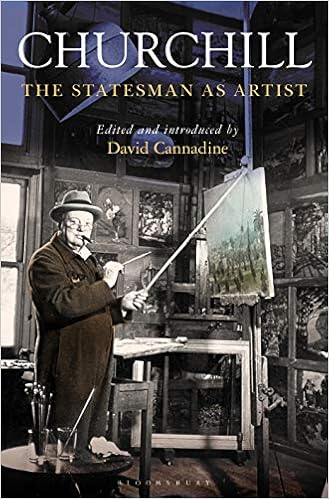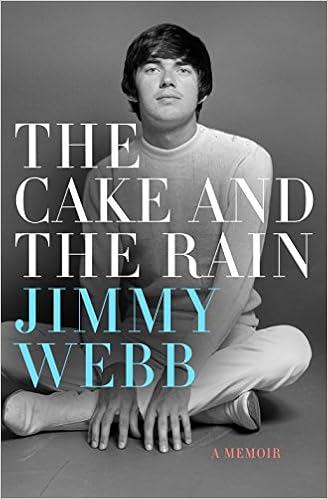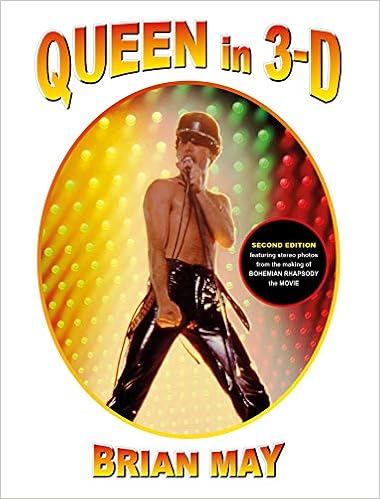She was black and a woman and a prosecutor, a graduate of Smith College and the granddaughter of slaves, as dazzlingly unlikely a combination as one could imagine in New York of the 1930s―and without the strategy she devised, Lucky Luciano, the most powerful Mafia boss in history, would never have been convicted. When special prosecutor Thomas E. Dewey selected 20 lawyers to help him clean up the city’s underworld, she was the only member of his team who was not a white male.
Her name was Eunice Hunton Carter, the author Stephen Carter’s grandmother. Invisible: The Forgotten Story of the Black Woman Lawyer Who Took Down America’s Most Powerful Mobster (Henry Holt, $30) is moving, haunting and as fast-paced as a novel, Invisible tells the true story of a woman who often found her path blocked by the social and political expectations of her time. But Eunice Carter never accepted defeat, and thanks to her grandson’s remarkable book, her long forgotten story is once again visible.
Literary icon Edmund White made his name through his writing but remembers his life through the books he has read. For White, each momentous occasion came with a book to match: Proust’s Remembrance of Things Past, which opened up the seemingly closed world of homosexuality while he was at boarding school in Michigan; the Ezra Pound poems adored by a lover he followed to New York; the biography of Stephen Crane that inspired one of White’s novels. But it wasn’t until heart surgery in 2014, when he temporarily lost his desire to read, that White realized the key role that reading played in his life: forming his tastes, shaping his memories, and amusing him through the best and worst life had to offer.
Blending memoir and literary criticism, The Unpunished Vice: A Life of Reading (Bloomsbury, $28) is a compendium of all the ways reading has shaped White’s life and work. His larger-than-life presence on the literary scene lends itself to fascinating, intimate insights into the lives of some of the world’s best-loved cultural figures. With characteristic wit and candor, he recalls reading Henry James to Peggy Guggenheim in her private gondola in Venice and phone calls at eight o’clock in the morning to Vladimir Nabokov–who once said that White was his favorite American writer.
From his rapid-fire stand-up comedy riffs to his breakout role in Mork & Mindy and his Academy Award-winning performance in Good Will Hunting, Robin Williams was a singularly innovative and beloved entertainer. He often came across as a man possessed, holding forth on culture and politics while mixing in personal revelations – all with mercurial, tongue-twisting intensity as he inhabited and shed one character after another with lightning speed.
But as Dave Itzkoff shows in his revelatory biography, Robin (Henry Holt, $30), Williams’s comic brilliance masked a deep well of conflicting emotions and self-doubt. Itzkoff shows how Williams struggled mightily with addiction and depression—topics he discussed openly while performing and during interviews—-and with a debilitating condition at the end of his life that affected him in ways his fans never knew. Drawing on more than a hundred original interviews with family, friends, and colleagues, as well as extensive archival research, Robin is a fresh and original look at a man whose work touched so many lives.
Though best known for the fictional cases of his creation Sherlock Holmes, Sir Arthur Conan Doyle was involved in dozens of real life cases, solving many, and zealously campaigning for justice in all.  In The Man Who Would Be Sherlock: The Real-Life Adventures of Arthur Conan Doyle (Thomas Dunne Books, $28.99), author Christopher thoroughly and convincingly makes the case that the details of the many events Doyle was involved in, and caricatures of those involved, would provide Conan Doyle the fodder for many of the adventures of the violin-playing detective. A great read, elementary my dear!
In The Man Who Would Be Sherlock: The Real-Life Adventures of Arthur Conan Doyle (Thomas Dunne Books, $28.99), author Christopher thoroughly and convincingly makes the case that the details of the many events Doyle was involved in, and caricatures of those involved, would provide Conan Doyle the fodder for many of the adventures of the violin-playing detective. A great read, elementary my dear!
Hunter S. Thompson is often misremembered as a wise-cracking, drug-addled cartoon character. Freak Kingdom: Hunter S. Thompson’s Manic Ten-Year Crusade Against American Fascism (PublicAffairs, $28) reclaims him for what he truly was: a fearless opponent of corruption and fascism, one who sacrificed his future well-being to fight against it, rewriting the rules of journalism and political satire in the process.

This skillfully told and dramatic story shows how Thompson saw through Richard Nixon’s treacherous populism and embarked on a life-defining campaign to stop it. In his fevered effort to expose institutional injustice, Thompson pushed himself far beyond his natural limits, sustained by drugs, mania, and little else. For 10 years, he cast aside his old ambitions, troubled his family, and likely hastened his own decline, along the way producing some of the best political writing in our history.
Who knew? Across almost 50 years, Winston Churchill produced more than 500 paintings. His subjects included his family homes at Blenheim and Chartwell, evocative coastal scenes on the French Riviera, and many sun-drenched depictions of Marrakesh in Morocco, as well as still life pictures and an extraordinarily revealing self-portrait, painted during a particularly troubled time in his life. 
In his introduction to Churchill: The Statesman as Artist (Bloomsbury, $30), David Cannadine provides the most important account yet of Churchill’s life in art, which was not just a private hobby, but also, from 1945 onwards, an essential element of his public fame. The first part of this book brings together for the first time all of Churchill’s writings and speeches on art, not only “Painting as a Pastime,” but his addresses to the Royal Academy, his reviews of two of the Academy’s summer exhibitions, and an important speech he delivered about art and freedom in 1937.
Churchill, The Life (Firefly Books, $29.95) uses his words, personal documents and photographs as well as private and public memorabilia to commemorate the private, military and political man who many consider “the greatest Briton of all time” and the best friend the United States ever had. Many of the items are published here for the first time.
“the greatest Briton of all time” and the best friend the United States ever had. Many of the items are published here for the first time.
Publishers continue to fill the air (and book shelves) with must-read, must-have books about singers, composers, legends and legacies. Some that hit all the right notes:
The Cake and the Rain: A Memoir (St. Martin’s Griffin, $17.99)
Jimmy Webb’s words have been sung to his music by a roster of pop artists, including Glen Campbell, Art Garfunkel, Frank Sinatra, Donna Summer and Linda Ronstadt. He’s the only artist ever to win Grammy Awards for music, lyrics and orchestration, and his chart-topping career has, so far, lasted 50 years, most recently with a Kanye West rap hit and a new classical nocturne. Here, Webb delivers a snapshot of his life from 1955 to 1970, from the proverbial humble beginnings into a moneyed and manic international world of beautiful women, drugs, cars and planes. One question remains: What was that cake doing in the rain?
Here, Webb delivers a snapshot of his life from 1955 to 1970, from the proverbial humble beginnings into a moneyed and manic international world of beautiful women, drugs, cars and planes. One question remains: What was that cake doing in the rain?
Did you ever wonder what goes into the creation of some of the best music ever recorded? And how someone becomes an iconic music professional who is universally admired? Al Schmitt on the Record: The Magic Behind the Music reveals answers to these questions and more. In this memoir of one of the most respected engineers of all time, you’ll discover how a  very young boy mentored by his uncle Harry progressed through the recording world in its infancy and, under the tutelage of legendary engineer and producer Tom Dowd in his heyday, became one of the all-time great recording engineers.
very young boy mentored by his uncle Harry progressed through the recording world in its infancy and, under the tutelage of legendary engineer and producer Tom Dowd in his heyday, became one of the all-time great recording engineers.
Michael Jackson All the Songs: The Story Behind Every Track (Cassell, $50) is the only book that tells the story behind every single song that the King of Pop ever released – from his formative years with the Jackson Five to his incredible and much-loved output as a solo artist.  More than 200 songs, videos and revolutionary dance moves are analyzed, uncovering the fascinating stories around their creation and allowing fans the chance to truly understand the artistry behind them.
More than 200 songs, videos and revolutionary dance moves are analyzed, uncovering the fascinating stories around their creation and allowing fans the chance to truly understand the artistry behind them.
This is Morrissey as you’ve never seen him before. Featuring many previously unpublished photographs, Morrissey: Alone and Palely Loitering (Cassell, $39.99) is a portrait of Morrissey at his creative peak. Journey through hundreds of Kevin Cummins’ renowned, era-defining images, taken over a ten-year period in locations all over the world, accompanied by recollections from the author on his time with Morrissey and the artistic process of collaborating with him. Intimate, creative and surprising, this is a document of an artist at the height of his powers.
taken over a ten-year period in locations all over the world, accompanied by recollections from the author on his time with Morrissey and the artistic process of collaborating with him. Intimate, creative and surprising, this is a document of an artist at the height of his powers.
Funny, revealing, self-aware, and deeply moving, Matters of Vital Interest: A Forty-Year Friendship with Leonard Cohen (Da Capo Press, $27) is an insightful memoir about Eric Lerner’s relationship with his friend, whose idiosyncratic style and dignified life was deeply informed by his spiritual practices.
 Lerner invites readers to step into the room with them and listen in on a lifetime’s ongoing dialogue, considerations of matters of vital interest, spiritual, mundane, and profane. In telling their story, Lerner depicts Leonard Cohen as a captivating persona, the likes of which we may never see again.
Lerner invites readers to step into the room with them and listen in on a lifetime’s ongoing dialogue, considerations of matters of vital interest, spiritual, mundane, and profane. In telling their story, Lerner depicts Leonard Cohen as a captivating persona, the likes of which we may never see again.
Queen in 3-D (Shelter Harbor Press, $45) is the first book ever to be published about legendary rock band Queen by a member of the band. And certainly the first book of its kind in the world. It s a unique collection of original, highly personal snapshots of Queen in Three Dimensions, from the band s inception in the early ’70s right up to the present day, accompanied by the exclusive recollections of founding member and lead guitarist, Brian May.
 The book is illustrated with more than 300 photographs; these shots of Freddie Mercury, John Deacon, Roger Taylor and Brian himself, on and off stage all round the world, spring into life when viewed with Brian’s patent OWL viewer (supplied free with the book). Through the eyes of Brian s camera you are transported back in time to experience Queen’s miraculous 46-year journey as if you were actually there . . . whether in a dressing room, in a car, on a plane, or on stage at Madison Square Garden.
The book is illustrated with more than 300 photographs; these shots of Freddie Mercury, John Deacon, Roger Taylor and Brian himself, on and off stage all round the world, spring into life when viewed with Brian’s patent OWL viewer (supplied free with the book). Through the eyes of Brian s camera you are transported back in time to experience Queen’s miraculous 46-year journey as if you were actually there . . . whether in a dressing room, in a car, on a plane, or on stage at Madison Square Garden.
More Queenmania can be found in the rock journalist Martin Popoff’s Queen: Album By Album (Voyageur Pres, $30). He convenes a cast of 19 Queen experts and superfans to discuss all 15 of the band’s studio albums (including their soundtrack for the 1980 film Flash Gordon).  Panelists include Queen experts, rock journalists, musicians and record industry figures. The results are freewheeling discussions delving into the individual songs, the circumstances that surrounded the recording of each album, the band and contemporary rock contexts into which they were released, and more.
Panelists include Queen experts, rock journalists, musicians and record industry figures. The results are freewheeling discussions delving into the individual songs, the circumstances that surrounded the recording of each album, the band and contemporary rock contexts into which they were released, and more.
